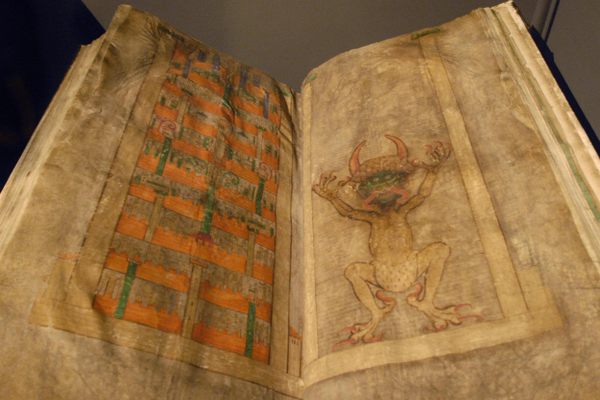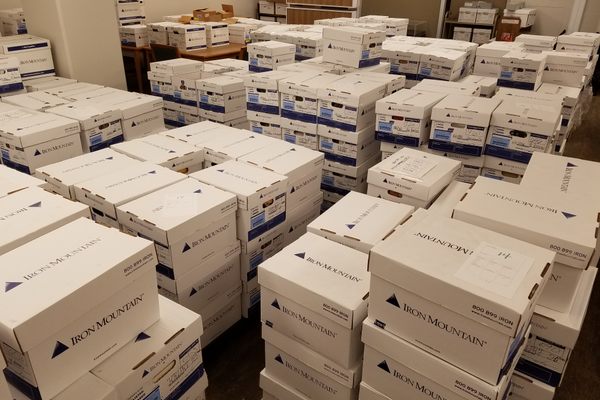Chap Records Were Basically Yelp for 1900s Eligible Bachelorettes
The books helped women keep track of—and review—their suitors.

After a second date in 1908 with a suitor named Ray Smith, Carol Pardee, the privileged granddaughter of Oakland mayor Enoch Pardee, took out her notebook and, with careless spelling, wrote her opinion about the boy: “To big a sport. Talks to much.”
Later in the year, she met Frank Haudel. Verdict: “[t]oo dirty. Teeth are green.” On January 16th, 1911, after a date with Wyman Smith from Sacramento, she wrote a one-word summary of the courter: “FOOL.”
These pithy reviews—others range from “dandy” to “tiresome” to the frequently used single-word dismissal of “mutt”—are still on display at The Pardee House museum in Oakland in Carol Pardee’s Chap Record, a small volume bound in green and gold with a dapper gentlemen doffing a hat on the cover.
The Chap Record was a mostly blank book with sections to be filled out by the “girl of the period”—things like Name, Date, Place, and Opinion. In the front was a section for the Twelve Most Notable Chaps. Published by the Frederick A. Stokes Company in 1898, it sold for a dollar.
The title page of the Chap Record had this rhyme, which perfectly sums up its role:
Behold herein, all nice and neat,
A record of the men I meet,
Among them all perhaps, there be,
Who knows, the “not impossible” He.
A few filled-out Chap Records are still hanging around in small museums and historical societies around the country. The Natick Historical Society in Massachusetts has one that was once owned by a woman named Marion Pooke that spans 20 years of dates. The archive of the Texarkana Museum has one by a woman named Aileen who called her suitors either “true blue” (positive) or “fickle” (negative). The one housed in the Harvey County Historical Museum and Archive in Kansas was filled out by 17-year-old Juliette Roff, and it focused more on the positive than negative of her suitors. “Cynical,” she writes for one, “but has lots of good traits.”
While these Chap Records are interesting glimpses into the minds of high-society women, they’re also markers in the shifting dynamic in American society from courtship to the kind of dating we know today. Previous to this era, “courtship” involved one man and one woman from the same community being urged by their families to go on a series of dates in the hopes that they’d be comfortable enough with each other to get married. These get-to-know-yous were held in homes, with others keeping a watchful eye on the proceedings.

As Moira Weigel points out in her book Labor of Love: The Invention of Dating, it wasn’t until 1896 that the word “date” enters the lexicon to its current meaning. (It came from writer George Ade in a short story in The Chicago Record about a neglected boyfriend, worried about other guys “fillin’ all my dates” with his gal.) This change in cultural norms was so great, in fact, that police were still arresting young men and women meeting together in public, who were trying to form a connection away from their nosy family members back at home.
Once this concept of “dating” became more accepted—as well as the idea that it was no longer forbidden for men and women to go on multiple dates with multiple people—the dating economy took off. As Weigel writes, “[f]or the first time in human history, dating made it necessary to buy things in order to get face time with a prospective partner.” The Chap Record was an early entry in the new business of courtship; the first ones sold for a buck just in time for the Christmas shopping season.
Perhaps most telling about the Chap Records that survive on the dusty shelves of the small museums throughout the country are just how unexciting they are. The entries are always brief, seemingly rushed, the work of people who feel obligated to write something but can’t quite muster up the enthusiasm. As such, they reveal only unimportant slivers of the writers.
In Carol Pardee’s case, before her death from influenza in 1920, she’d gotten engaged to Jerry Hadar, a prominent attorney in Oakland. He is not mentioned anywhere in her Chap Record. As always, some things are best left away from prying eyes, even ones coming a century in the future.


















Follow us on Twitter to get the latest on the world's hidden wonders.
Like us on Facebook to get the latest on the world's hidden wonders.
Follow us on Twitter Like us on Facebook